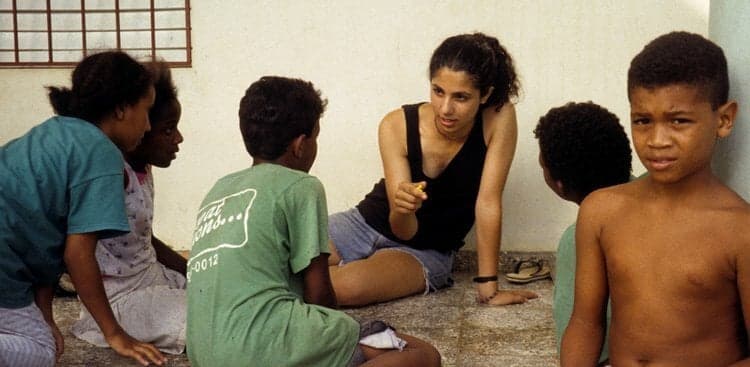Volunteering your time to good causes around the world is a great way to spend a vacation, study abroad, or develop professionally. It enriches the travel experience, it helps you learn about yourself, and it may even set you on a new career path.
After leading service learning trips abroad for students and professional delegations, I have witnessed just how much volunteering can change lives for the better. But, it can also raise a lot of important questions about the complexity of doing good. My colleagues often come to me with the same question, “I want to do something that gives back, but where do I start?”
Whether you’re traveling abroad or working locally, volunteer experiences vary in their impact and quality, and you want to make sure you’re making the most of your experience. So, before you set out to volunteer, here are the first steps you should take to find an experience that will benefit from your skills and help you develop in the field.
Do Your Research
What kind of experience are you looking for? Do you want to invest time and learn the inner workings of an organization, or do you want to just do something different while you are on vacation? Volunteering is big business, and there are many different types of “volunteer” experiences, so you should look to see which one is a fit for you.
I recommend contacting organizations directly to find out what opportunities are available and what their needs and requirements are. (Check out Idealist for volunteer opportunities and organizational profiles.) There are also volunteer agencies that will set you up with an organization and sightseeing excursions. Just be aware that some agencies will charge a lot for being able to set up the same opportunities you can arrange on your own.
Early on in the process, you should narrow down what type of volunteer experience will be a fit for your skills and experience. Do you have skills to teach English or develop marketing materials? Do you want to work with an organization that deals with an issue you have always been interested in but never had the chance to learn about, or build on an organization that might already do work in your field?
Also be aware that you won’t be doing just one thing on the ground. Just because you may be volunteering with an organization that helps kids doesn’t mean you will get to play with them all the time. The staff may need you to develop curriculum or write grant proposals—this sort of administrative work is often dismissed by volunteers, but this is often where organizations need the most help.
Talk to staff at the organizations you’re interested in, learn about the culture you’ll be in (both organizational and of the country you’ll be in), and reach out to former volunteers. Above all, choose an organization and a mission you’re really excited about before proceeding.
Have a Goal
Once you’ve narrowed down the organization you’d like to work with, it’s important to have a plan before you go, with clear outcomes of what you’ll accomplish. In some cases, organizations have plans for what they’d like volunteers to do, but many times, you’ll be proposing your own project and goals.
When doing this, think carefully about what you can offer and how it aligns with the local community’s needs and goals. (You would be surprised at some of the off-the-mark volunteer pitches I’ve seen. Do communities in rural areas of Borneo need Zumba lessons or juice cleanses? Definitely not.) To be honest, everyone can volunteer their time, but not everyone can do it effectively, so think carefully about your purpose and what you set out to do, and make sure it meets organizational needs.
Also be honest with yourself about your personal goals. If you are going for this because you are in career transition and want to boost your resume, for example, then think about tangible skills you can offer that can best benefit the organization and highlight those skills.
Be Realistic About Timing and Resources
Whether you travel for two weeks or two months, it’s important to consider what you can accomplish during that period. If you can only get away for a week, you may be able to tackle a short-term project, but will have limited impact. Just as you understand the way things work, it will be time to leave, and this can be frustrating. (Though, I’ve seen people sustain a shorter period by using their volunteering time to understand daily operations and then help out with marketing and fundraising when they get home.) If you’d like to go for three months or more, think about the long-term goals of the organization and how you can contribute best to them.
Also be honest about what limitations you might run into, such as finances, resources, and running out of time. Sometimes volunteers come in with a lot of great ideas, but the staff capacity, budget, and infrastructure isn’t always there to achieve those goals. While teaching photography workshops on the Thai-Burma border, I didn’t realize how much time each class would take and how simple things like transportation and film processing time would impact the work we were able to accomplish in class. What I had planned to cover over the course of six weeks actually required 10 different class meetings, and even then I didn’t feel it was as efficient as it could have been.
Fund It
Before going, you will need to plan for how you’ll fund your experience and set a budget—everything from travel expenses to the supplies or clothes you’ll need to any materials required for the project. If you need special accommodations for whatever reason (like dietary needs or larger accommodations), plan to pay a little bit more so these adjustments don’t burden the organization you are working with when you get on the ground.
If you keep these four steps in mind, things will become a lot easier to find your ideal organization or experience. In my next column, we’ll look at how to be successful when you are on the ground, navigating a different culture, entering a new organization, or trying to stand out among hundreds of volunteers.

